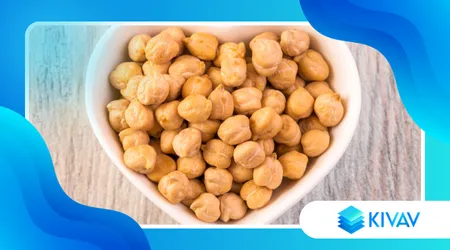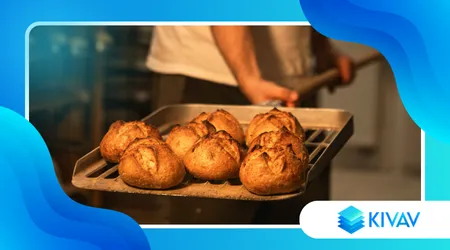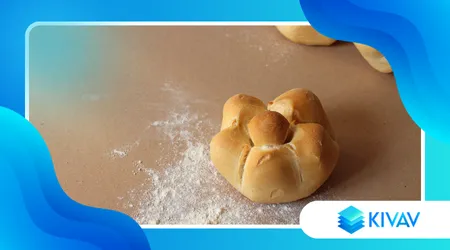Chickpea flour bread

Chickpea flour bread. In the culinary landscape of 2025, an old star makes its return: chickpea bread.
Announcements
This is not just a dough, but a statement of sustainability, taste and well-being, reflecting growing consumer awareness.
Versatile and nutritious, chickpea flour is revolutionizing the world of baking.
A Journey Through Time: The Unknown History of Chickpea Flour
Chickpeas, originally from the Middle East, have a history spanning thousands of years.
They were cultivated in Türkiye as early as 7,500 years ago, later arriving in Italy, where they became a staple of the peasant diet. The flour made from them has an equally fascinating and humble history.
Announcements
Long considered a secondary ingredient, it has gained popularity due to its versatility.
Today, its use extends far beyond traditional regional recipes like Ligurian farinata or Sicilian panelle. It represents a rediscovery of authentic, rustic flavor.
The Chemistry of Taste: Nutritional Properties and Benefits
There chickpea flour It's not only a tasty alternative, but also a powerhouse of well-being. It's naturally gluten-free, making it a valuable option for celiacs and those with intolerances.
Rich in vegetable proteins, fibre and minerals, it contributes to a balanced diet.
Its low glycemic index makes it ideal for controlling blood sugar. Its nutritional richness is an added bonus.
Learn more: Sicilian pizza
Its presence in bread enriches the nutritional profile and improves digestibility.
The unique flavor it imparts is earthy and slightly sweet, adding depth to the final product. The resulting texture is soft and firm.

Innovation in the Kitchen: Techniques and Secrets for Perfect Bread
Create a great chickpea flour bread requires mastery.
It's a dough that behaves differently from traditional ones. Its gluten-free nature makes it less elastic and more crumbly.
A key secret is using a small percentage of strong wheat flour to provide structure. Hydration is crucial and must be carefully managed.
Learn more: How to make super-thin fresh pasta sheets
Another trick is to add natural binding agents like xanthan gum.
Fermentation is a process that requires patience. A long-rising dough develops complex flavors and an airy texture.
Using sourdough starter can further enhance the flavor, making it more acidic and persistent.
Beyond Tradition Chickpea Flour Bread
Classic bread is just the starting point. The variations are endless and stimulate the baker's creativity. Imagine a bread enriched with turmeric and sunflower seeds.
Or, try a version with black olives and rosemary, perfect as an accompaniment to aged cheeses.
Its versatility makes it an excellent ingredient for focaccia, crackers and breadsticks.
++ Black truffle crostini: a quick and elegant appetizer
This bread can be a blank canvas for culinary expression. It can be sweet or savory, depending on the pairings.
An example is a loaf with raisins and walnuts, an excellent breakfast.
Another example is a bread with caramelized onion and thyme, ideal for an aperitif. The rich flavor of the chickpea flour it marries perfectly with strong and fragrant ingredients.

Sustainability and Economic Impact: A Growing Market
The rediscovery of the chickpea flour It has a positive impact on agriculture. Chickpeas are a resilient crop and require less water than other crops.
They contribute to soil fertility by fixing nitrogen.
This makes them an eco-friendly and sustainable choice for farmers. The market for chickpea products is booming.
A recent 2024 report by Coldiretti's Economic Observatory found that legume production in Italy grew by 151 t3 tonnes compared to the previous year.
The Table of the Future
Chickpea flour bread isn't a passing fad. It's a trend that reflects a paradigm shift.
It is a response to the demand for healthier, more sustainable and authentic products.
This bread is a perfect analogy of how the past and the future can coexist in harmony.
Like an ancient melody performed on modern instruments, bread brings an ancient flavor into a new era.
The future of artisanal baking is linked to these rediscoveries.
It's not just a matter of ingredients, but of a philosophy. It embodies awareness and innovation.
| Characteristics | Traditional Bread | Chickpea Flour Bread |
| Nutritional Profile | Carbohydrates, gluten | Protein, fiber, minerals |
| Taste | Neutral | Earthy, slightly sweet |
| Consistency | Elastic, rubbery | Compact, soft |
| Hydration | Variable | Tall, requires attention |
In a world where 60% of consumers, according to research by Euromonitor, look for functional foods, the chickpea flour bread It's positioning itself as a winning choice. But this is just the beginning.
Bread That Tells a Story
Chickpea flour bread is more than just a food. It's a story of sustainability, health, and flavor.
It represents the culmination of a culinary journey that values authenticity and quality.
It is a complete sensory experience, which stimulates the palate and nourishes the body.
Its uniqueness makes it a key ingredient on the table, not just a simple accompaniment. It increases consumer awareness of food choices.
In an age when people are seeking healthier and more conscious alternatives, chickpea flour bread is a practical and delicious solution. Are you ready for this sensory journey?
It's very high in protein
Chickpea bread is an excellent protein alternative. Chickpea flour, derived from legumes, provides high-quality plant-based protein and fiber, essential for muscle health and digestion.
This bread is therefore a nutritious, tasty and ideal choice for vegetarian and vegan diets, offering a complete and balanced meal.
Frequently Asked Questions
Is chickpea flour bread always gluten-free?
No, for a better texture, a percentage of wheat flour is often added. It's essential to check the ingredients if you're celiac.
How to store bread?
It can be stored in a paper bag for 2-3 days. For longer storage, it can be sliced and frozen.
Can chickpea flour completely replace wheat flour?
Not completely, as it behaves differently. It's recommended to combine it with other flours.
